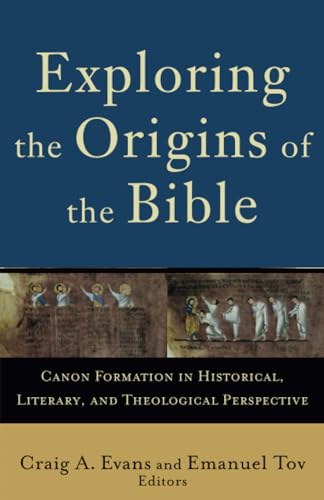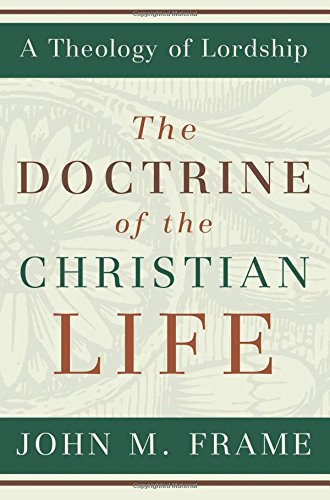Handbook of Patristic Exegesis
Written by Charles Kannengiesser Reviewed By Matthew R. CrawfordThe Handbook of Patristic Exegesis is a welcome addition to the growing body of literature on the interpretation of the Bible among the church fathers. This is a field that evangelicals have, for the most part, been slow to engage. Far too often patristic exegesis is simply derided with well-worn epithets such as allegory, and those examples of patristic interpretation adduced in introductory books on hermeneutics are often the worst examples that do not justly represent the fathers’ interpretive approach. Such an attitude creates a tacit tension for evangelicals who nevertheless staunchly maintain the creeds of Nicaea and Chalcedon, for the theological conclusions reached at those ecumenical councils were based upon the fathers’ exegetical meditations. It is high time for evangelicals to awaken to the vast body of patristic exegesis and, indeed, to sit at the feet of the fathers as they think upon Scripture.
The history-of-dogma approach to the fathers (e.g., von Harnack) that began in the eighteenth century tended to obscure the exegetical contributions of the church fathers by emphasizing only the development of doctrine. As a result, even today patristic interpretation of the Bible is often overlooked. As stated in the introduction to this volume, “The centrality of the Bible to the whole patristic reality is something that is not generally recognized” (p. 12). For example, the fifth-century bishop Cyril of Alexandria is most remembered for his involvement in the christological controversies surrounding the Council of Ephesus (431), even though approximately seventy-percent of his surviving corpus consists of exegetical commentaries on Scripture, much of which remains untranslated into any modern language. The Handbook of Patristic Exegesis is a good place to start for those who wish to explore the fathers’ approach to Scripture.
The sheer size of The Handbook for Patristic Exegesis is a testament to the degree of labor that went into its making. Previously published as two volumes, it has recently been released in a single bound volume. The author, Charles Kannengiesser, a widely respected scholar in the field who formerly taught at Notre Dame and the Institut Catholique of Paris, says in the introduction that the book was ten years in the making. The goal of the volume is not to make an original contribution, but “through analyzing relevant scholarly contributions, to attempt a coherent understanding of scholarly achievements within the whole field of patristic exegesis for almost a century” (p. 3). The book is divided into two parts. The first part, consisting of approximately the first quarter of the book, is essentially a short introduction to the field. Kannengiesser reviews the past fifty years of international research in the field, along with brief discussions of Jewish interpretation and Graeco-Roman rhetoric, two foundational contexts for understanding the fathers’ exegesis. Next is a discussion of patristic hermeneutics and a book-by-book overview of how the fathers approached individual books of the Bible.
The second part of the handbook is a chronological survey of the individual fathers and movements. The period surveyed spans the first century to the seventh century in the West and the ninth century in the East. For every person (e.g., “Justin of Rome”) or significant topic (e.g., “The Formation of the Scriptural Canon”), Kannengiesser provides a brief overview of the issue and then a bibliography for further study. The bibliographies prove to be one of the most useful parts of the book, as they list critical editions of an author’s works (if available) and modern translations, along with monographs and articles on an author’s exegesis. The studies listed in the bibliographies survey scholarship broadly, including sources in English, French, German, Italian, Spanish, and Latin. Kannengiesser even has a chapter on patristic exegesis in Armenian, Georgian, Coptic, and Ethiopian Christian literature, languages that are often overlooked in the field, and in which much further work remains to be done. As a result, The Handbook of Patristic Exegesis serves as an ideal starting point for any research project on the interpretation of the Bible among the fathers.
It should be noted that, although Kannengiesser is the primary author of the book, there are several other “special contributions” from other recognized scholars in the field. For example, Sydney H. Griffith of Catholic University of America authored the section on Ephraem the Syrian, while the chapter on patristic exegesis of the books of the Bible was written by David L. Balás of the University of Dallas and D. Jeffrey Bingham of Dallas Theological Seminary.
Patristic exegesis should be especially useful to evangelicals engaged in a variety of research projects. For example, the fathers did not approach the study of the Bible assuming the modern dichotomy between biblical studies and systematic theology, and as a result, their exegesis is intimately interwoven with their theology. Those modern theologians and biblical scholars involved in the burgeoning movement of theological interpretation should find the fathers especially useful dialogue partners. Furthermore, the fathers’ interpretation was also profoundly spiritual and ecclesial, and so should interest those involved in modern attempts at spiritual theology. As seen in Athanasius’ Letter to Marcellinus, “It was through seeing themselves in that mirror [of Scripture] that Christian believers found a coherent expression for both their most intimate convictions and their collective behavior” (p. 14).
The Bible has always been at the heart of evangelical identity and conviction, and rightly so. The plowman can sit and profitably read and understand the Scriptures with only the aid of the Holy Spirit. However, the doctrine of the perspicuity of Scripture does not negate the benefit of hearing the exegetical meditations of others. “In an abundance of counselors there is safety” (Prov 11:14). It is time for evangelicals to arise and claim the great patristic exegetical heritage as their own. For those who wish to undertake this task, The Handbook of Patristic Exegesis is an indispensable tool.
Matthew R. Crawford
Matthew R. Crawford
Durham University
Durham, England, UK
Other Articles in this Issue
We begin with a question of translation. Many translations place a period after the word “conviction” in 1 Thess 1:5: “in power and in the Holy Spirit and with full conviction...
The Inexhaustible Fountain of All Good Things: Union with Christ in Calvin on Ephesians
by Lee GatissJuly 10, 2009 was the 500th birthday of the acclaimed French Reformer John Calvin...
The name of Martin Luther is perpetually linked to the doctrine of justification by faith alone...
Of the many questions currently surrounding the discussion about justification, the relationship between justification and spiritual fruit merits attention...
Every year a few students ask me my thoughts about whether they should pursue doctoral studies and I respond with what has come to be known as ‘The Speech...







